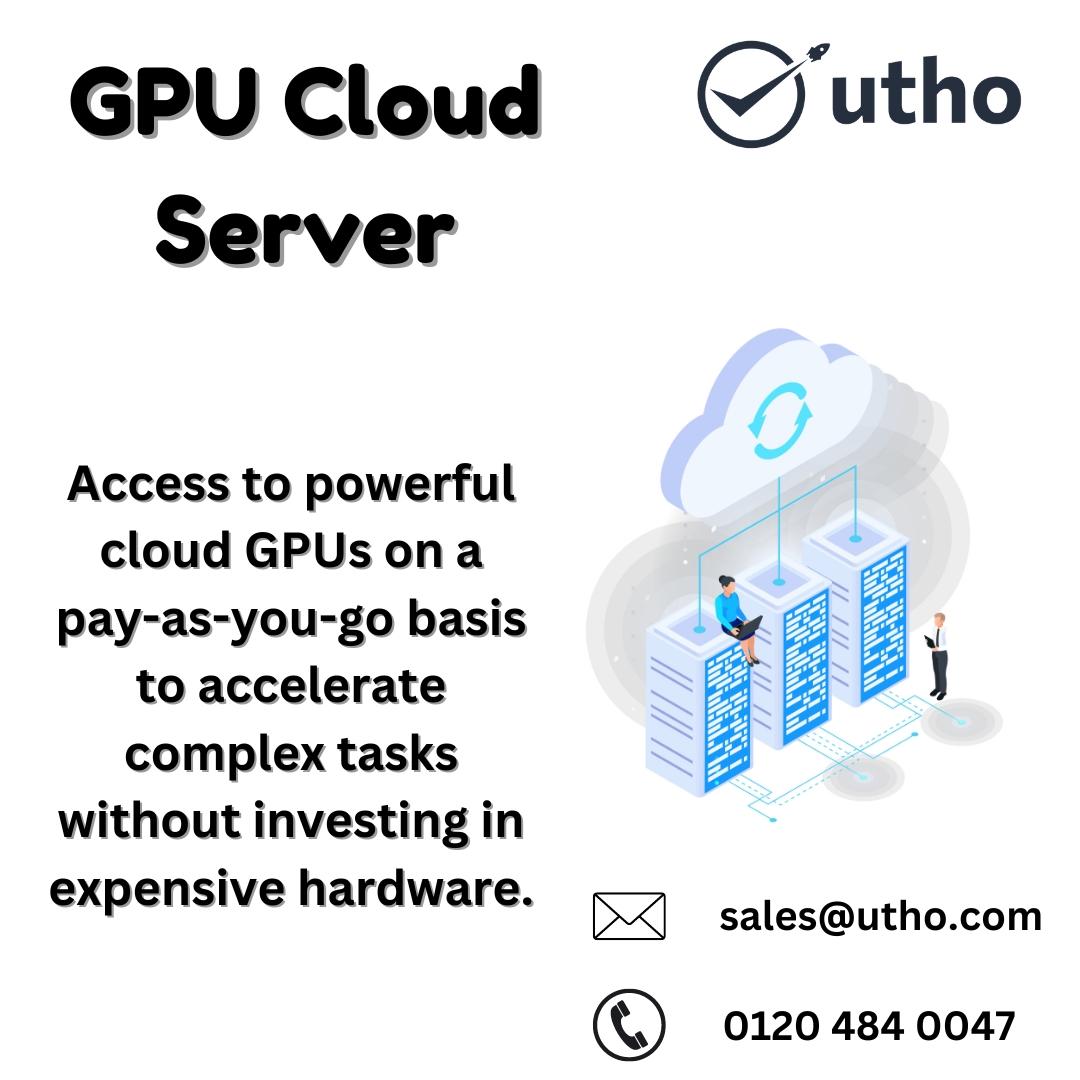How to Evaluate Cloud GPU Pricing for Scalable Enterprise Workloads

As AI adoption grows across industries, enterprises are increasingly relying on GPU-powered cloud infrastructure to train models, render media, and process large-scale data. However, navigating cloud GPU pricing can be challenging—especially when balancing performance needs with budget constraints.
This guide outlines how enterprises can make informed decisions when choosing a GPU cloud server provider, ensuring predictable costs and long-term scalability. With a focus on security, compliance, and total cost of ownership, it’s built for CTOs, data leads, and enterprise architects evaluating platforms like Utho.
Understand the True Cost Behind GPU Cloud Services
When evaluating GPU cloud servers, enterprises must look beyond simple hourly rates to grasp the full cost of ownership. Pricing models can vary widely, and what appears inexpensive upfront may lead to unexpected expenses later. A transparent and predictable pricing structure is essential to avoid budget overruns and enable accurate financial planning.
Billing Transparency: Enterprises need providers who offer clear, usage-based billing with no hidden fees or ambiguous charges. This transparency ensures that finance and procurement teams can forecast costs confidently and justify cloud investments to stakeholders.
Instance Flexibility: Enterprise workloads often fluctuate—seasonal demand spikes, project ramp-ups, or sudden computational needs require the ability to quickly scale GPU resources up or down. Providers should enable seamless scaling without long provisioning delays or penalties tied to fixed contracts, so enterprises pay only for what they use.
Finally, enterprises should explore sustained usage discounts or reserved instance pricing. These models reward predictable, long-term workloads with reduced rates, lowering overall expenditure. By combining flexible scaling with cost-effective reserved options, enterprises can optimize budgets while maintaining performance and availability.
Match Pricing to Enterprise-Grade Performance
Enterprise workloads—AI training, inference, or 3D rendering—require consistent performance under varying loads. The cloud GPU pricing model should support this with predictable throughput. Look for:
-
Dedicated high-performance GPUs: NVIDIA A100, H100, or similar options for intensive computing
-
Guaranteed resource isolation: Avoid noisy neighbors with dedicated or bare-metal GPU instances
-
Workload-optimized tiers: Match GPU type to use case (e.g., AI inference vs video rendering)
Prioritize Enterprise-Grade Security and Compliance
Security lapses and regulatory violations can lead to financial penalties, reputational damage, and operational disruption. Enterprises must ensure their GPU cloud provider meets stringent data protection, isolation, and compliance standards. A secure foundation is non-negotiable when deploying sensitive AI or analytics workloads at scale.
Enterprise-ready features:
-
Private networking (VPC) to isolate data and applications
-
Role-based access control (RBAC) for team management and auditing
-
Certifications like ISO 27001, SOC 2, and GDPR-ready infrastructure
Evaluate Total Scalability, Not Just Cost Per Hour
GPU needs rarely remain static in enterprise environments—especially with AI and data projects evolving fast. Your cloud platform must scale quickly and cost-effectively across teams, use cases, and regions. Scalability ensures performance stays consistent even under peak demand.
Scalability indicators:
-
Automated horizontal and vertical scaling for large-scale model training
-
Multi-region availability to support global teams and low-latency apps
-
No vendor lock-in to enable migrations or hybrid deployments if needed
Assess Integration and Workflow Compatibility
Enterprise GPU workloads rarely operate in isolation—they are part of broader ML pipelines, CI/CD workflows, or data analytics platforms. Evaluating cloud GPU providers should also include how well they integrate into your existing toolchain and infrastructure. Compatibility ensures faster deployment and less overhead for your engineering teams.
Key evaluation points:
-
Support for container orchestration: Native integration with Kubernetes or Docker for efficient workload management
-
API access and automation tools: Enables infrastructure-as-code (IaC), autoscaling triggers, and streamlined provisioning
-
Data locality and transfer optimization: Reduce latency and egress costs by deploying GPUs close to your primary data storage
Ensuring your GPU cloud solution fits into your broader enterprise architecture helps reduce adoption friction, avoid redundant tooling, and boost team productivity.
Choose a Provider with Proven Enterprise Support
Enterprise deployments require more than self-service dashboards—they demand responsive, expert-level assistance. Whether troubleshooting infrastructure or scaling environments, fast, knowledgeable support reduces friction and maximizes uptime. Choose a partner that treats support as a core service, not a footnote.
What to expect:
-
24/7 human support with GPU and ML workload expertise
-
Dedicated success managers for high-value clients
-
Fast SLAs on incident response and provisioning
Final Takeaway: Align Pricing with Enterprise Priorities
Choosing the right GPU cloud server isn’t just a cost decision—it’s a strategic one. Enterprises must look beyond hourly rates to evaluate long-term value, operational reliability, and compliance readiness. A cloud provider like Utho, with transparent pricing and enterprise-grade infrastructure, ensures your workloads run securely, scale efficiently, and support your business goals without compromise.
- Art
- Causes
- Crafts
- Dance
- Drinks
- Film
- Fitness
- Food
- Игры
- Gardening
- Health
- Главная
- Literature
- Music
- Networking
- Другое
- Party
- Religion
- Shopping
- Sports
- Theater
- Wellness


